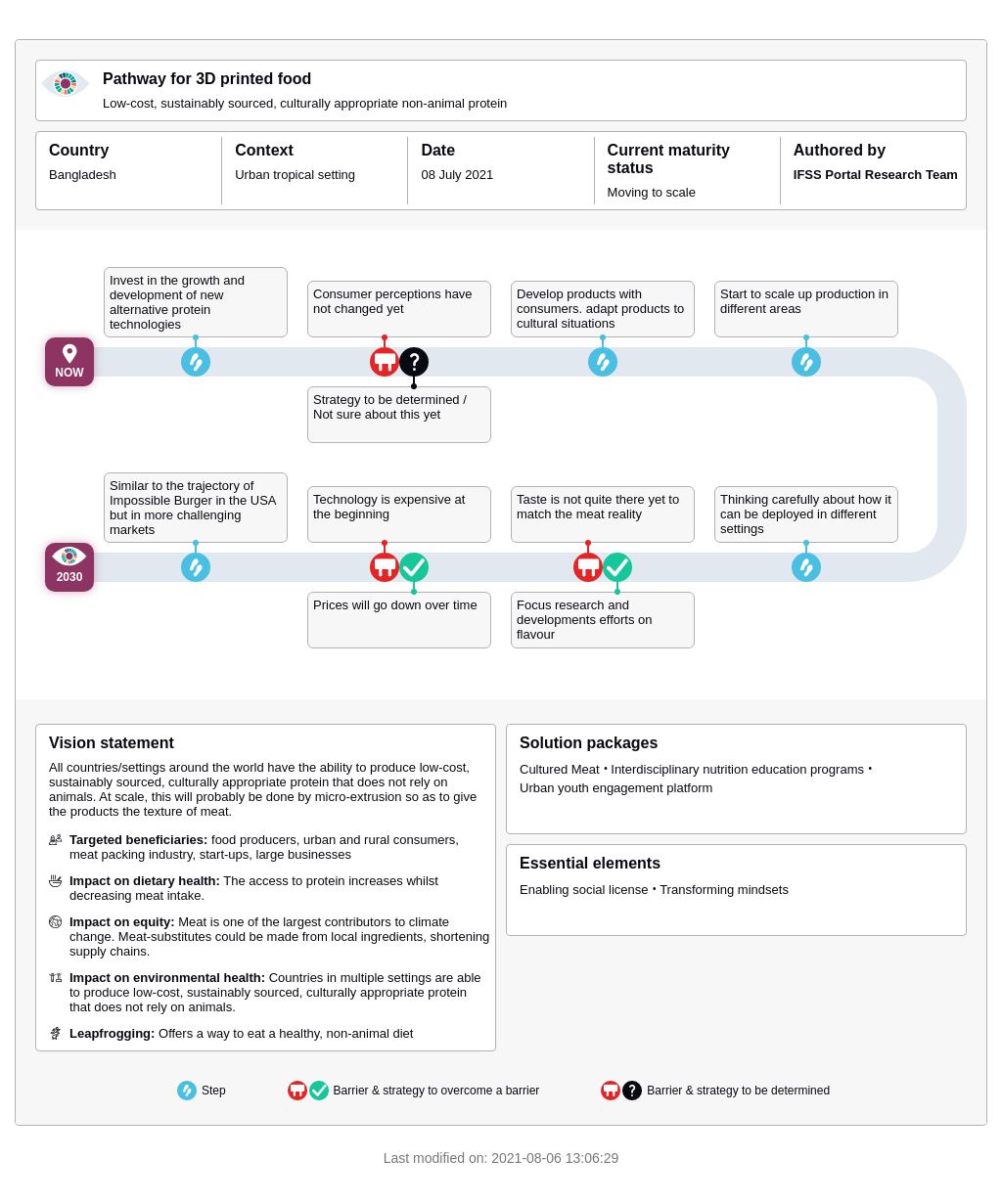
Low-cost, sustainably sourced, culturally appropriate non-animal protein
All countries/settings around the world have the ability to produce low-cost, sustainably sourced, culturally appropriate protein that does not rely on animals. At scale, this will probably be done by micro-extrusion so as to give the products the texture of meat.

